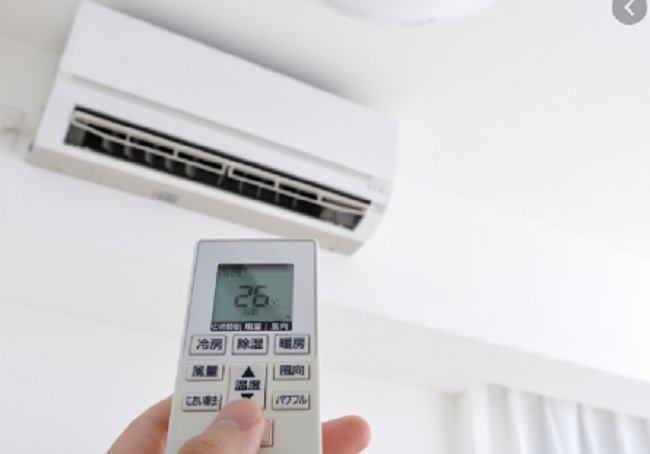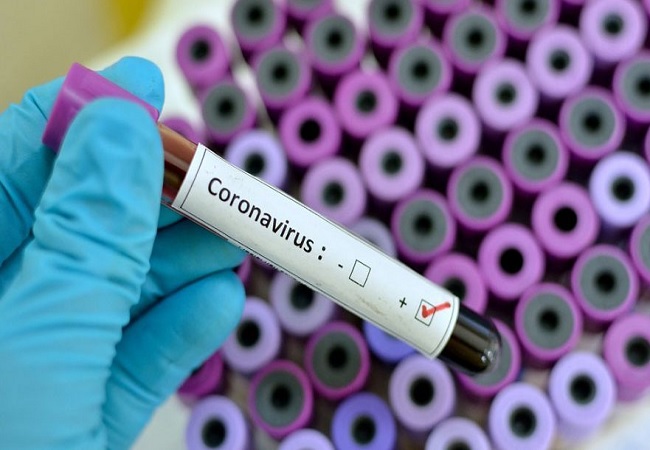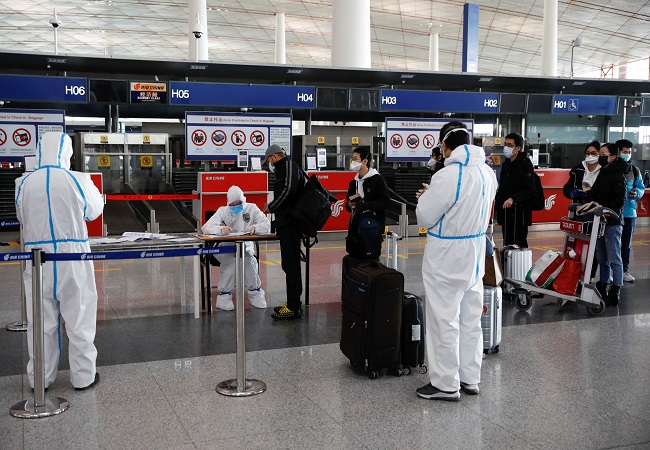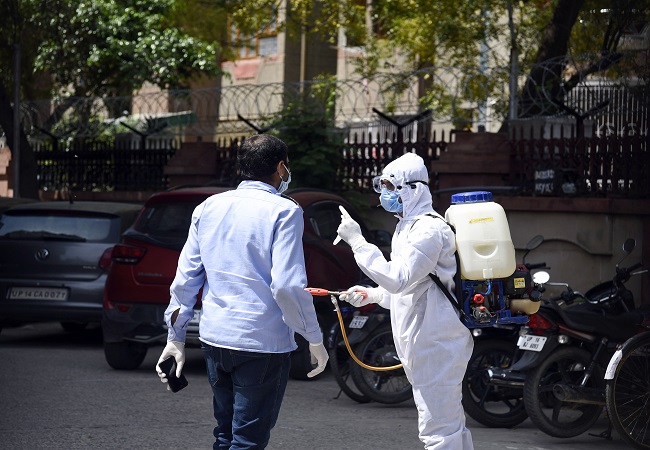

— By Dr KK Aggarwal
With inputs from Mr Ashish Rakheja (AEON Integrated Building Design Consultants) and Dr K K Kalra (former CEO NABH)
609: Why we are talking about AC as a concern ?
During January 26–February 10, 2020, an outbreak of 2019 novel coronavirus disease in an air-conditioned restaurant in Guangzhou, China, involved 3 family clusters. The airflow direction was consistent with droplet transmission. To prevent the spread of the virus in restaurants, we recommend increasing the distance between tables and improving ventilation.
The size of a coronavirus particle is in the range of 80-160 nanometres. It is transferred via infected microscopic airborne particles and contaminated aerosol droplets. Droplets and small particles of a broad spectrum of diameters get generated during coughing & sneezing. The air-conditioning system can exacerbate the spread of the particles in case it is not designed or operated properly.
610: What are the lessons learnt from Diamond Princes Ship ?
Researchers at Purdue University in the US studied the air conditioning systems on the Diamond Princess — a 3,700-passenger cruise that was placed on lockdown off the coast of Yokohama after a passenger disembarked in Hong Kong and tested positive for the novel virus earlier this month.
According to a Centres for Disease Control and Prevention (CDC) report, 46.5 per cent of the passengers on board the Diamond Princess had infections at the time of testing.

Traces of the SARS-CoV-2 was identified on a variety of surfaces in cabins of both symptomatic and asymptomatic passengers up to 17 days after cabins were vacated on the Diamond Princess.
611: What is special of Cruise ship air conditioning systems ?
They are not designed to filter out particles as small as the coronavirus, allowing the disease to rapidly circulate to other cabins.
It’s standard practice for the air conditioning systems of cruise ships to mix outside air with inside air to save energy.
The problem is that these systems can’t filter out particles smaller than 5,000 nanometres. If the coronavirus is about the same size as SARS, which is 120 nanometres in diameter, then the air conditioning system would be carrying the virus to every cabin.
Cruise Air conditioning system is like a Hotel air conditioning system. The main risk of transmission is in the public areas of Cruise ship when all the Guests are in close contact in a common conditioned space.
612: What about airplanes ?
The risk is primarily due to close contact between the passengers while seated and due to touch of surfaces like seats, handles, doors, luggage etc. The air-conditioning will be a lesser challenge as modern aircrafts are better equipped.
613: What is droplet ?
Carries particle size of > 5 micron
614: What happens if the humidity is high ?
It will absorb moisture, become heavier and settle on the floor or surfaces quickly.
As per REHVA and ISHRAE guidelines, relative humidity greater than 80% and above tend to neutralize the COVID-19 virus.
615: What happened if the temperature is high ?
Once settled on the surface which is hotter, the moisture will get dried out exposing the virus to heat and its death

As per work published by Chinese researchers, SARS-CoV-2 has been found highly stable on surfaces for 14 days at 4 °C; one day at 37 °C and 30 minutes at 56 °C. Higher indoor temperatures are therefore desirable.
616: What happens if the atmosphere is cold ?
The droplet on the surface may persist longer.
At colder temperatures, Small droplet nuclei or residue are formed from droplets (usually within milliseconds) in the air, which shrink in size due to the process of evaporation and desiccation in low humidity. These small droplets tend to be carried to a longer distance through airflow generated by AC systems.
617: What about home air conditioners ?
Home AC units may not pose any additional risk of Covid-19 infection during lockdown period with no outside contact.
Since the virus does not stay suspended in the air for a very long time, air conditioners should not be a threat provided it is in your own house where no one is infected.
Home air conditioners are therefore safe if inside occupants are non-infected. It is recommended to keep windows slightly open or introduce a fresh air source to ensure dilution of pollutants.
610: What about split ACS and central ACs ?
Coronavirus can spread within spaces that are centrally air conditioned — such as shopping malls and some modern apartments, especially if an infected person is inside such spaces.
Also, in places like centrally air-conditioned shopping centres etc, where there are usually a lot of people, the virus can get recycled in the air for a short span of time.
Split AC and Central AC operation in larger buildings run the risk of propagating transmission of virus. However, the risk can be minimized with higher ventilation rate, superior filtration and UV treatment of air.

611: But virus is not airborne ?
In AC atmosphere the surface to human transmission will be more than person to person transmission.
This virus is not airborne. It is just that if a person sneezes, a thick spray gets created — that is when a virus is in the air. But it does not float around in the air — it settles on surfaces and can stay there for a very long time.
If people visit a centrally air-conditioned mall during a pandemic, the risk of getting exposed to the coronavirus directly from an infected person is far greater than getting it from the recycled AC air.
At colder temperatures& low RH conditions, small droplet nuclei or residue are formed from droplets (usually within milliseconds) in the air, which shrink in size due to the process of evaporation and desiccation in low humidity. These small droplets tend to be carried to a longer distance through airflow generated by AC systems.
612: What about split ACs in a house, if I must use it ?
For a split type system, open window a bit to have outdoor air entering room.
Home air conditioners are safe if inside occupants are non-infected. It is recommended to keep windows slightly open or introduce a fresh air source to ensure dilution of pollutants.
613: What about window AC, if I must use it ?
For window air conditioning system, increase the outdoor airflow rate if there is an option. If not, open the window a bit to have more outside air.
Window air conditioners are safe if inside occupants are non-infected. It is recommended to keep windows slightly open or introduce a fresh air source to ensure dilution of pollutants.
614: What about central AC, If I cannot avoid ?
If one uses central air conditioning system, coronavirus could be transmitted to all the spaces it conditions if return air is used. For central air conditioning systems, use 100 per cent outside air.

Central AC operation in larger buildings run the risk of propagating transmission of virus. However, the risk can be minimized with higher ventilation rate, superior filtration and UV treatment of air.
615: What are The Federation of European Heating, Ventilation and Air Conditioning Associations (REHVA) guidelines ?
The body recommends buildings to switch on ventilation systems round the clock, or at least extend the operation of ventilation systems as much as possible.
Ventilation rates should be switched to low power when people are absent in order to remove virus particles out of the building. Exhaust ventilation systems of toilets should be kept on 24/7, suggests REHVA.
In buildings without mechanical ventilation systems, windows should be kept open for at least 15 minutes before somebody enters, especially if it was previously occupied by others.
However, such places should not keep windows in toilets open as it will encourage contaminated airflow from the toilet to other rooms.
616: What are CDC guidelines ?
Increase ventilation by opening windows or adjusting air conditioning
617: What about CAR AC ?
Keep windows open when possible, increase ventilation and Regularly disinfect surfaces
618: What about planes with newer facilities ?
The International Air Transport Association says that aircraft air conditioning systems are equipped with high-energy particulate air (HEPA) filters that can screen more than 99.9 percent of airborne threats, including microbes and viruses.
Air is refreshed every two to three minutes in the newest planes with about 50 percent of it coming from outside.
This means the risk of contracting a virus on an aircraft is lower than the risk from daily activities such as going to work in an office.
Airlines have also upgraded aircraft cleaning procedures to deal with surfaces that can also potentially transmit the coronavirus.
619: What about airport lounges and counters ?
They will carry the same risk as the diamond princes ship or AC malls. High risk of surface to human transmission.

The airport lounges and counters are provided with central air conditioning which run the risk of propagating transmission of virus. However, the risk can be minimized with higher ventilation rate, superior filtration and UV treatment of air.
620: What about centrally AC hospitals ?
They have the biggest risk as they in addition carry the aerosol production in most procedures.
The Covid 19 isolation rooms must be run at negative temperatures and exhaust air from these rooms must be treated before letting out in the vicinity. However, the risk from walk in Covid infected patients is high. The heat recovery wheels, if installed must be disabled.
621: Will HEPA filters work ?
Air purifiers with HEPA filtration efficiently capture particles the size of (and far smaller than) the virus that causes COVID-19.
The answer is yes, in theory. The CDC believes the virus is mainly transmitted by person-to-person contact, but there is growing evidence that it may also be transmitted through the air. If that is confirmed to be the case, HEPA filters will capture airborne coronaviruses.
The virus that causes COVID-19 is approximately 0.125 micron (125 nanometres) in diameter. It falls squarely within the particle-size range that HEPA filters capture with extraordinary efficiency: 0.01 micron (10 nanometres) and above.
Many people have incorrectly stated that HEPA filters don’t filter below 0.3 micron and therefore could not capture airborne coronaviruses. This NASA study of HEPA filtration is quite technical, but the graph on page 7 and the preceding paragraph do a good job of explaining why HEPA filters are actually most efficient—almost 100 percent at 0.01 micron—at capturing ultrafine particles below the 0.3-micron HEPA test standard.
HEPA filters are efficient in minimizing the spread of airborne virus. However, the air change rate should be minimum 12 ACPH for increasing its effectiveness.
The room air purifiers also contain HEP filters. However only a small air quantity passes through filter and hence their effectiveness is severely limited.
622: Will the virus remain alive in the filter ?
It’s not certain.
The filters run the risk of live virus and should be serviced in Personnel Protection Gears
623: If someone in your household is sick with COVID-19 what to do ?

Running an air purifier in their quarantine room may help protect other family members or caregivers. The same goes for healthcare workers who are self-quarantining when they come home.
But even if you live with a healthcare worker or someone sick with COVID-19, before you run out to buy an air purifier, simply opening up the windows in your home to let in fresh air will help dilute indoor contaminants—including virus particles.
If airing out the room isn’t an option, try using a high-efficiency particulate air (HEPA) purifier.
624: What are lessons from 2003, during the SARS outbreak ?
The Hong Kong Hospital Authority recommended hospitals us e portable air purifiers with HEPA filters to help reduce transmission to healthcare workers if isolation wards were not available.
In the U.S., the CDC also recommended the use of HEPA purifiers to help reduce viral concentrations of the SARS virus in the air when properly ventilated hospital rooms weren’t available.
Recent research published in the Journal of Infectious Disease and under review at BMC Infectious Diseases suggests that air filtration can reduce the risk of transmission of measles and influenza.
625: What is CDAR ?
The faster an air purifier can cycle air through the filter, the better its chances of catching virus particles. You can see how fast an air purifier cleans the surrounding air by looking for its CADR (clean air delivery rate) number on the packaging.
CADR reflects, in cubic feet per minute, the volume of clean air that an air purifier produces at its highest speed setting. At lower speeds, the rate a machine is able to clean air decreases. The packaging should have three CADR ratings, one for smoke, dust, and pollen, which represent small, medium, or large particles, respectively. For example, a purifier with a CADR of 250 for smoke reduces smoke particle levels to the same concentration that would be achieved by adding 250 cubic feet of clean air each minute. (Smoke particles are similar in size to the smallest virus droplets while larger droplets are closer to the pollen size range.)
((The writer is President, CMAAO, HCFI and Past national President IMA))




